Chile Piquin Scoville Rating: 30,000-60,000 SHU Heat Level
Chile Piquin peppers have a Scoville Heat Unit (SHU) rating of 30,000 to 60,000, making them significantly hotter than jalapeños (2,500-8,000 SHU) but milder than habaneros (100,000-350,000 SHU). This small but mighty pepper packs a serious punch despite its tiny size—about the size of a marble. Native to the southern United States, Mexico, and parts of Central America, this wild-growing chile is often hidden among shrubs and rocky terrain, but don't be fooled by its innocent appearance—it's a flavor bomb with intense heat and complex flavor.
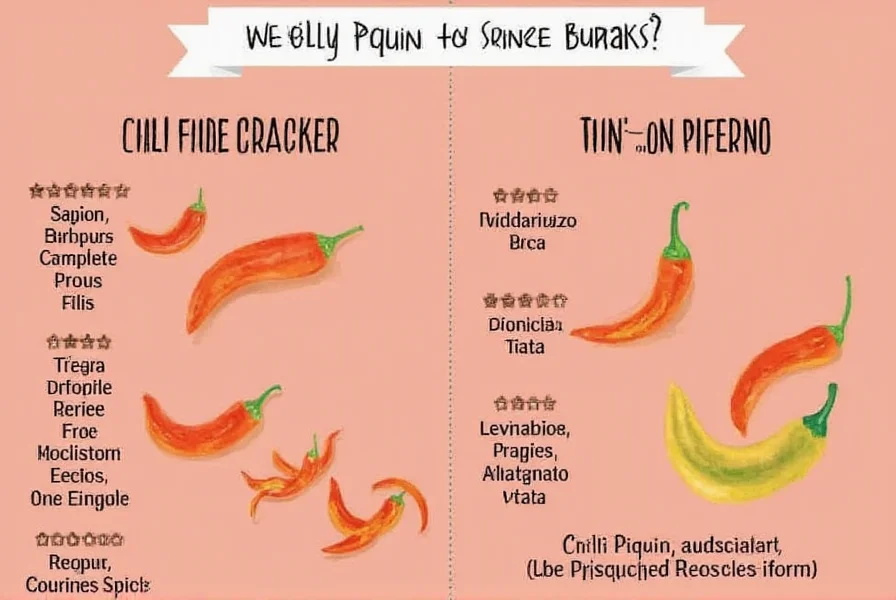
Chile Piquin Heat Level Compared to Other Peppers
| Pepper | Scoville Range (SHU) |
|---|---|
| Jalapeño | 2,500 – 8,000 |
| Serrano | 10,000 – 23,000 |
| Chile Piquin | 30,000 – 60,000 |
| Habanero | 100,000 – 350,000 |
So while it doesn't quite reach habanero-level intensity, the chile piquin definitely earns its spot in the "hot" category. It's hotter than a jalapeño on steroids!
What's the Scoville Scale, Anyway?
To truly appreciate the chile piquin, we need to understand how spice is measured—and that leads us straight to the legendary Scoville Scale. Invented by pharmacist Wilbur Scoville back in 1912, the scale measures the concentration of capsaicin (the compound responsible for heat) in peppers, expressed in Scoville Heat Units (SHU).
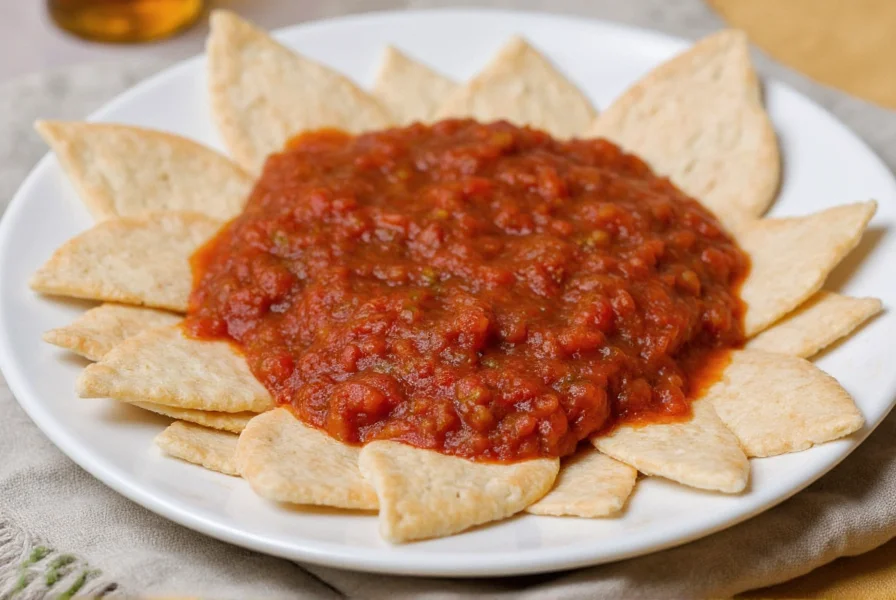
The method originally involved diluting a pepper extract until the heat was no longer detectable by a panel of tasters—yes, real humans sipping spicy mystery solutions. Today, high-performance liquid chromatography gives us more accurate readings, but the Scoville number remains the gold standard for chiliheads everywhere.
Taste Beyond the Burn
Now here's the twist: the chile piquin isn't just about the heat—it's also got some serious flavor chops. Underneath that initial kick is a rich, earthy, almost smoky sweetness that lingers long after the fire fades. Think of it as a complex wine—but instead of grapes, it's made from volcanic fury and forest berries.
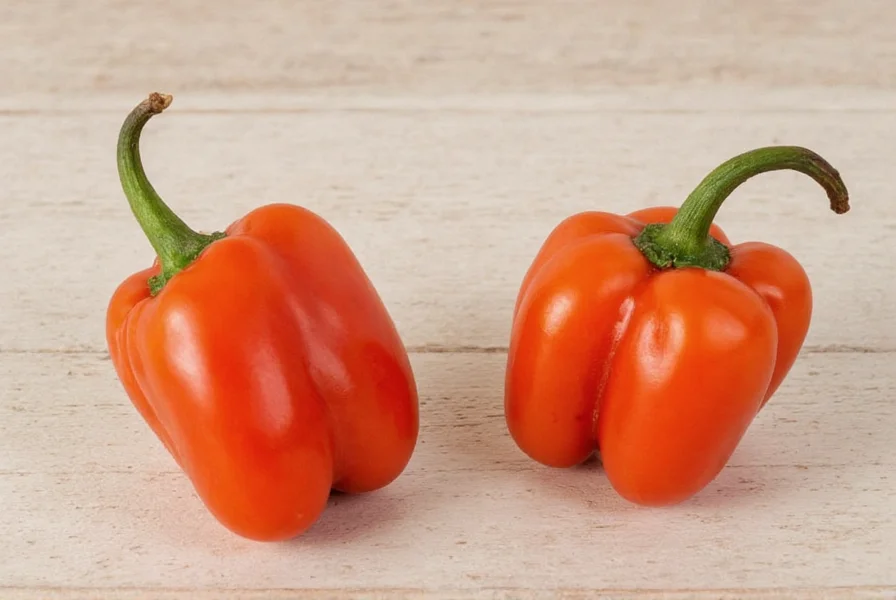
Profile Highlights:
- Earthy & Nutty: Reminiscent of toasted walnuts or roasted cumin.
- Fruity Undertones: Like dried cranberries or black cherry.
- Subtle Smoke: A whisper of mesquite or charred wood.
Creative Ways to Use Chile Piquin
Whether you're a home cook looking to jazz up your mole or a professional chef aiming for authentic Mexican flair, the chile piquin can add depth and drama to your dishes. Here are some fun and practical ways to use it:
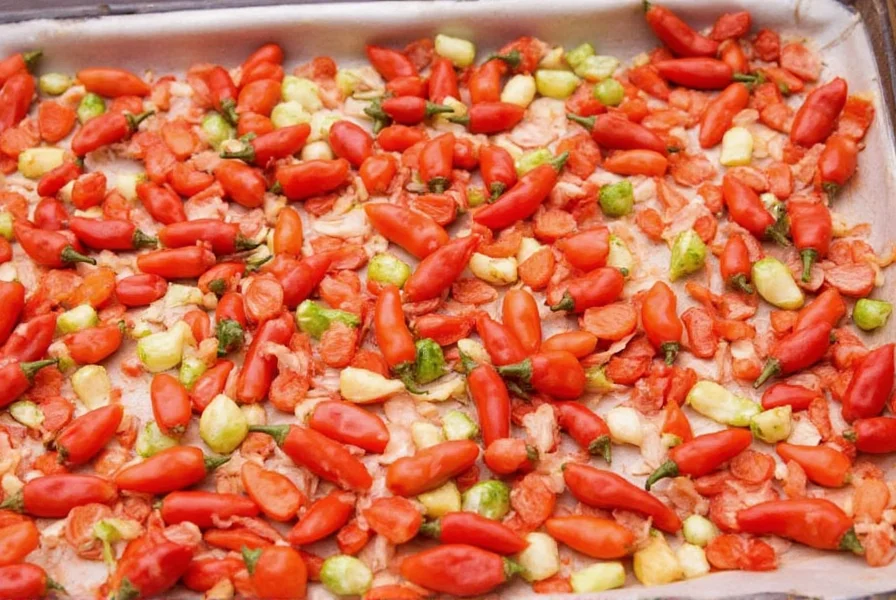
- Infused Oils: Toast dried chiles in oil over low heat to create a potent base for drizzling over tacos, grilled veggies, or popcorn.
- Mole Magic: Add a few crushed chiles to your next batch of mole sauce for an extra layer of heat and flavor.
- Dry Rubs: Crush them up and mix with salt, garlic, and herbs for a smoky-savory rub on chicken or pork.
- Powder Power: Turn dried piquins into a fine powder using a spice grinder and use it as a finishing spice for soups, stews, or even chocolate desserts.
- Chutneys & Relishes: Combine chopped fresh or rehydrated piquin chiles with onions, vinegar, and sugar for a zesty condiment that pairs well with grilled meats.
Buying Guide: How to Choose Your Chile Piquin
Ready to bring some piquin power into your kitchen? Here's your ultimate guide to selecting and storing this fiery gem:
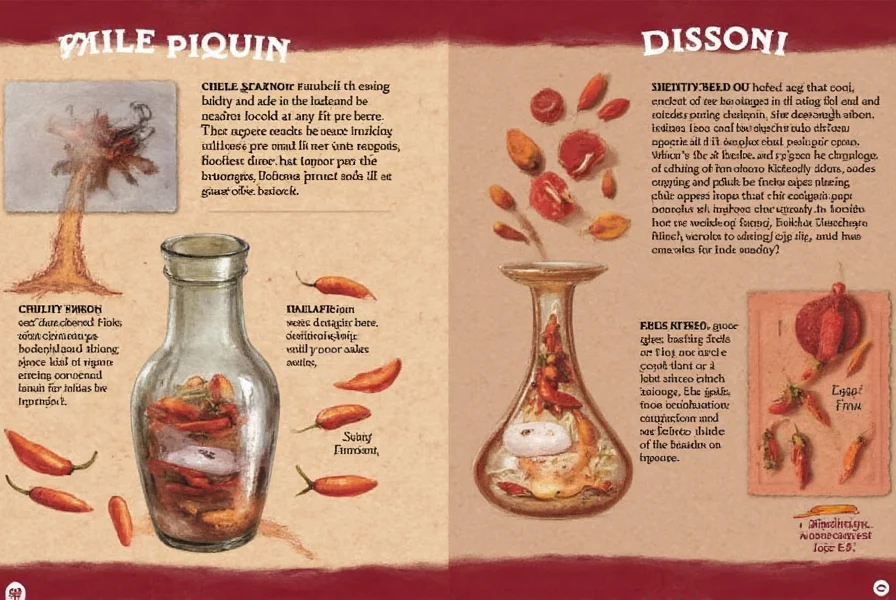
Choosing Fresh Chiles
- Look for firm, glossy skin without wrinkles or soft spots.
- Color matters: Green chiles are less spicy; red ones have matured and will deliver more heat.
- Size isn't everything: Don't go for the largest chiles—remember, smaller often means spicier!
Dried vs. Fresh
| Type | Pros | Cons |
|---|---|---|
| Fresh | Bold, bright flavor. Great for salsas and sauces. | Short shelf life. Requires refrigeration. |
| Dried | Long shelf life. More concentrated flavor. Easier to store. | Needs rehydration. Slightly less vibrant taste. |
Storing Tips
- Fresh chiles: Store in a paper bag in the fridge for up to two weeks.
- Dried chiles: Keep in an airtight container in a cool, dark place for up to a year.
- Freezing: Freeze whole fresh chiles in a ziplock bag. They'll keep for up to six months and can be added directly to soups or sauces frozen.
Product Spotlight: Dried Chile Piquin Packets
If you're not lucky enough to find fresh chiles locally, many online spice shops offer high-quality dried chile piquin packets. Here's what to look for:
- Features: Organic, sun-dried, free from preservatives.
- Advantages: Easy to store, consistent heat, versatile in recipes.
- Use Cases: Soups, sauces, marinades, dry rubs.
- Target Audience: Home cooks, adventurous foodies, and professional chefs alike.
- Suitable Occasions: Cooking for family dinners, preparing party snacks, or impressing guests with homemade spice blends.
Frequently Asked Questions About Chile Piquin and the Scoville Scale
How hot is the Chile Piquin on the Scoville scale?
The Chile Piquin measures between 30,000 to 60,000 Scoville Heat Units (SHU), placing it firmly in the "hot" category of peppers. This means it's significantly hotter than jalapeños (2,500-8,000 SHU) and serranos (10,000-23,000 SHU), but milder than habaneros (100,000-350,000 SHU). The heat can vary based on growing conditions, with some specimens reaching the higher end of this range.
How does Chile Piquin compare to other popular peppers?
The Chile Piquin is approximately 4-24 times hotter than a jalapeño, depending on where it falls in its heat range. It's noticeably hotter than serranos but generally milder than habaneros. Compared to Thai bird's eye chilies (50,000-100,000 SHU), the Chile Piquin sits at the lower to middle range of heat. Its heat comes on quickly with a sharp initial burn that lingers, unlike the slower-building heat of some other hot peppers.
Are Chile Piquin peppers the same as bird's eye chilies?
While they're often confused due to similar size and heat, Chile Piquin (Capsicum annuum) and bird's eye chilies (Capsicum frutescens) are different species. Chile Piquin has a more complex flavor profile with earthy, nutty notes and subtle fruitiness, while bird's eye chilies tend to have a sharper, more one-dimensional heat. Geographically, Chile Piquin is native to Mexico and the southern US, whereas bird's eye chilies originated in Southeast Asia.
Can I grow Chile Piquin peppers at home?
Yes! Chile Piquin plants are relatively easy to grow in warm climates (zones 9-11). They thrive in full sun with well-draining soil. These peppers are actually quite hardy and drought-tolerant once established. If you live in a cooler climate, grow them in containers that can be brought indoors during colder months. The plants typically grow 2-4 feet tall and produce abundant small peppers that start green and ripen to red. Seeds germinate in 2-3 weeks at 75-85°F (24-29°C).
What's the best way to handle extremely hot peppers like Chile Piquin?
When handling Chile Piquin peppers, wear gloves to prevent capsaicin from irritating your skin. Avoid touching your face, especially eyes. If you don't have gloves, wash hands thoroughly with soap and cold water (hot water opens pores and can increase absorption). To reduce heat in cooking, remove the seeds and white placenta where most capsaicin is concentrated. If you accidentally get pepper on your skin, use milk or alcohol to break down the capsaicin, not water (which spreads it).
Why does the Scoville range for Chile Piquin vary so much?
The wide Scoville range (30,000-60,000 SHU) for Chile Piquin is due to several factors: growing conditions (soil quality, water stress, and sunlight exposure significantly impact heat production), ripeness (fully red peppers are hotter than green ones), and genetic variation since many Chile Piquin peppers grow wild. The plant produces more capsaicin when stressed, which is why wild-harvested peppers often test at the higher end of the scale. Even within the same plant, individual peppers can vary in heat.
Conclusion
There you have it—the chile piquin Scoville scale rating is nothing short of impressive, sitting proudly in the upper echelons of medium-to-hot peppers. But beyond the numbers, this diminutive dynamo brings a unique blend of heat, flavor, and versatility that's hard to match.
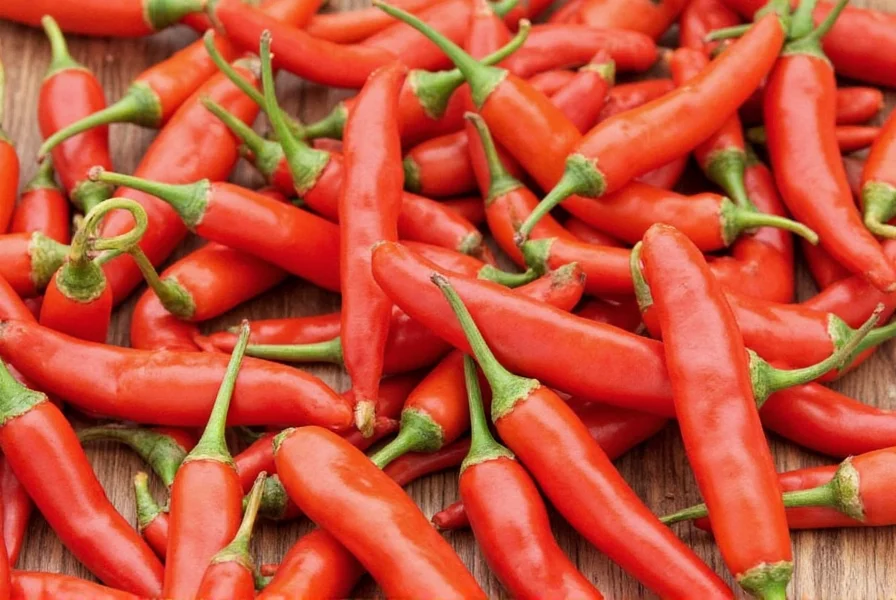
Whether you're spicing up your taco night or experimenting with global cuisine, the chile piquin deserves a spot in your pantry. It's proof that great things really do come in small packages—especially when those packages are full of fire and flavor!

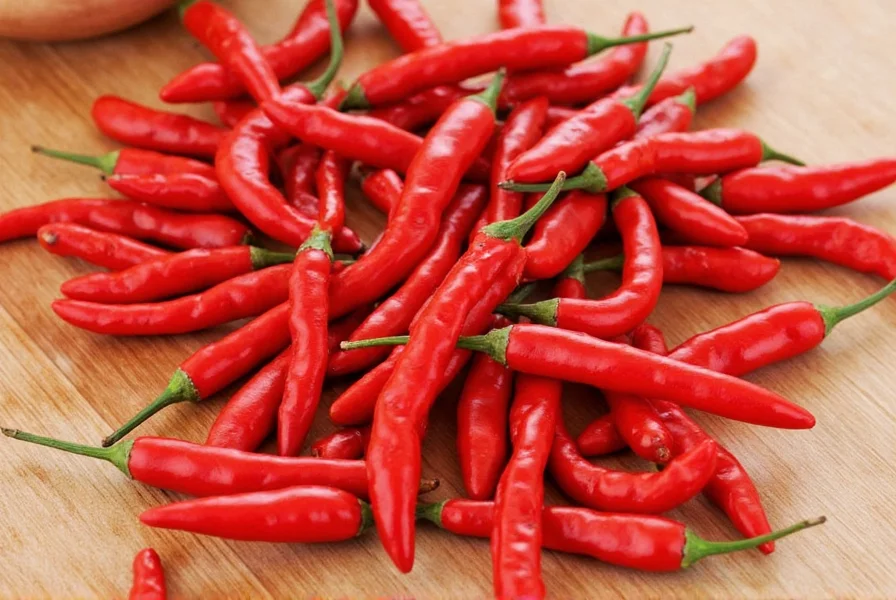









 浙公网安备
33010002000092号
浙公网安备
33010002000092号 浙B2-20120091-4
浙B2-20120091-4